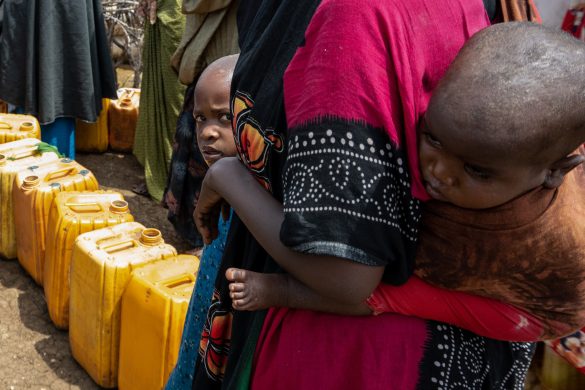Bunden er “faldet ud” af Den 3. Verden, hvor 35 lande står tilbage så fattige som nogen sinde i slipstrømmen fra andres fremgang – og dét selv om der aldrig har været så få ekstremt fattige globalt set siden 1981 til trods for det galopperende folketal.
WASHINGTON, October 10, 2013 (World Bank): The number of people living in extreme poverty around the world has sharply declined over the past three decades, but in 2010 it still included roughly 400 million children, or one -third of those living in such abysmal (afgrundsdybe) conditions.
This is according to a new World Bank analysis released Thursday that for the first time gives an in-depth profile of the poorest people in the world.
The report found that, compared to 1981, 721 million fewer people lived in extreme poverty in 2010 – defined as under 1,25 US dollar (ca. syv DKR) a day.
But it also concluded that a disproportionate (uforholdsmæssigt stort) number of children were among them: Children accounted for one in three of those living in extreme poverty around the world in 2010, compared with only one in five of those living above the poverty line.
In low-income countries, the percentages were even worse, with half of all children living in extreme poverty.
And while extreme poverty rates have declined in all regions, the world’s 35 low-income countries – 26 of which are in Africa – registered 100 million more extremely poor people today than three decades ago.
In 2010, 33 percent of the extreme poor lived in low-income countries, compared to 13 percent in 1981.
“Cruelly condemned”
“Children should not be cruelly condemned to a life without hope, without good education, and without access to quality health care. We must do better for them”, said World Bank Group President Jim Yong Kim.
“The finding that over 400 million children live in extreme poverty and children are more likely to be poor than adults is disturbing, since this can exacerbate (forværre) child labor and create inter-generational poverty traps,” said Kaushik Basu, World Bank Chief Economist and Sr. Vice President,
“Hence, if we want to make a sustainable dent on (indhug i) global poverty, this is where we need to focus our attention.”
Poverty reduction globally has moved at a faster pace than expected; the Millennium Development Goal (2015 Målet) of halving extreme poverty between 1990 and 2015 was reached five years ahead of time.
But the World Bank’s analysis released Thursday underscored the difficulty of reaching the goal to end poverty by 2030 all together, finding that while the reduction in poverty moved significantly in middle-income countries such as China and India, low-income countries showed much slower progress – or none at all.
The depth of poverty
The analysts found that the poor in 2010 were as bad off as they were in 1981, with the exception of India and China.
The “average” poor person in a low-income country lived on 78 cents a day in 2010, compared to 74 cents a day in 1981.
But in India, the average income of the poor rose to 96 cents in 2010, compared to 84 cents in 1981, while China’s average poor’s income rose to 95 cents, compared to 67 cents.
The report also calculated that the amount of money needed every year to lift more than a billion people out of extreme poverty would be 169 billion in 2005 dollars. This was less than half than in 1981.
Focus on Rural Areas, Agriculture and Access to Basic Services
Læs videre på
http://www.worldbank.org/en/news/press-release/2013/10/10/report-finds-400-million-children-living-extreme-poverty
Man kan læse hele den tankevækkende rapport “The State of the Poor: Where Are The Poor, Where Is Extreme Poverty Harder to End, and What Is the Current Profile of the World’s Poor?” på
http://siteresources.worldbank.org/EXTPREMNET/Resources/EP125.pdf
Se interview på CNN med Verdensbankens præsident Jim Yong Kim:
http://live.worldbank.org/the-end-of-poverty-jim-kim-richard-quest-cnn














